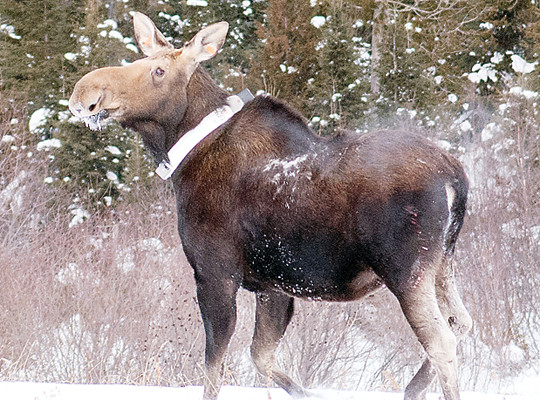Support the Timberjay by making a donation.
Voyageurs moose numbers remain stable
VOYAGEURS NATIONAL PARK— Minnesota’s only national park continues to maintain a modest, but stable, moose population, according to the latest aerial survey in the park. Park biologists released …
This item is available in full to subscribers.
Attention subscribers
To continue reading, you will need to either log in to your subscriber account, or purchase a new subscription.
If you are a current print subscriber, you can set up a free website account and connect your subscription to it by clicking here.
If you are a digital subscriber with an active, online-only subscription then you already have an account here. Just reset your password if you've not yet logged in to your account on this new site.
Otherwise, click here to view your options for subscribing.
Please log in to continue |
Voyageurs moose numbers remain stable
VOYAGEURS NATIONAL PARK— Minnesota’s only national park continues to maintain a modest, but stable, moose population, according to the latest aerial survey in the park. Park biologists released their results late last month.
As population research goes, the park’s moose herd represents a relatively small sample, with the latest estimate pegged at just 41 animals, evenly divided between males and females.
Calves accounted for 16 percent of the population, with a cow/calf ratio of 0.46, an improvement over some recent years, when barely one in four cows had calves. According to surveys over the past 25 years, the park’s moose herd has fluctuated within a narrow range, with an average estimate of 43.5 moose during that period.
Spread across the entire Kabetogama Peninsula, which is the water-based park’s main land area, that represents just one moose for roughly every three square miles. That’s considered a low-density population, but it’s one that has held its own even as research in other parts of northeastern Minnesota show significant declines over the past ten years. Currently, nine of the park’s adult moose are fitted with GPS collars, which enables researchers to closely monitor their habitat use and causes of mortality.
Since 2010, a total of nine of the 22 adult moose collared since 2010, have died. That represents a nine percent annual mortality rate, well within the North American average of eight to twelve percent. It’s also much lower than was experienced in moose in northwestern Minnesota in the late 1990s, when a once robust moose herd all but disappeared in less than a decade. During the collapse, the moose annual mortality rate in northwestern Minnesota hit 21 percent. More recently, in northeastern Minnesota, aerial surveys have suggested annual mortality as high as 15 percent, although more recent study results suggest that mortality rates have improved since 2013.
Within the park, 37 percent of adult moose deaths are currently attributed to health issues, 13 percent to legal hunting when animals cross into nearby northwestern Ontario, with the remaining 50 percent listed as unknown, although biologists acknowledge that some of those moose could be victims of predator attacks.
The park also maintains a significant population of gray wolves, which frequently prey on moose in other parts of northern Minnesota. While a recent study by Dr. L. David Mech suggested that increased wolf abundance may be reducing moose numbers in some parts of northeastern Minnesota, biologists Steve Windells and Bryce Olson, at Voyageurs, say there’s little evidence of a similar negative impact on moose in the park.
“Data from studies of wolf diet composition in the VNP ecosystem confirm that wolves consume primarily deer and beaver and very little moose,” stated the authors of the study. Both deer and beaver densities are relatively high in the park, according to the study, making them more reliable prey for wolves.






